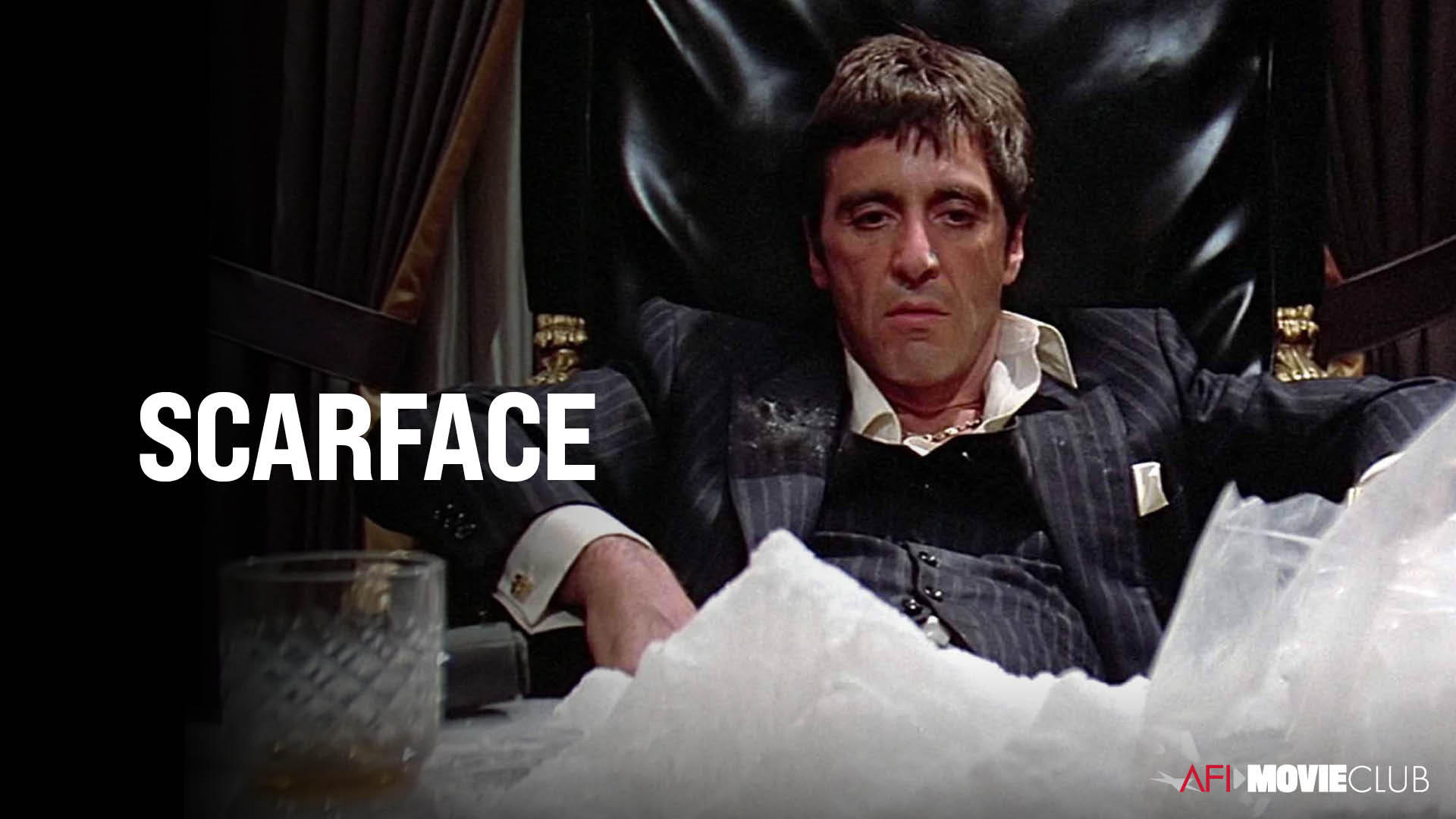Al Pacino in Scarface (1983)

Antonio “Tony” Montana, the central character of Brian De Palma’s 1983 film “Scarface,” stands as a powerful representation of the American Dream gone awry. Portrayed by Al Pacino, Tony embodies the ambition and ruthlessness that characterize the pursuit of success in a society often defined by its inequalities. His rise from a Cuban immigrant to a powerful drug lord in Miami offers a complex exploration of themes such as greed, identity, and the moral dilemmas that accompany the relentless pursuit of power.
From the outset, Tony Montana’s character is established as fiercely ambitious and unapologetically aggressive. He arrives in Miami as part of the Mariel Boatlift, seeking a new life in America. However, rather than conforming to societal expectations, Tony chooses a path marked by violence and criminality. His determination to rise above his circumstances quickly morphs into a singular obsession with wealth and power. This transition encapsulates a critical commentary on the nature of the American Dream, suggesting that it is not always attainable through hard work and integrity, but can also be pursued through morally questionable means.
Al Pacino’s performance as Tony Montana is one of the most iconic in cinematic history. His portrayal captures the character’s ferocity and vulnerability, making him both a compelling anti-hero and a deeply flawed individual. Pacino infuses Tony with a volatile mix of charisma and brutality, allowing viewers to understand the motivations behind his ruthless actions. The famous line, “Say hello to my little friend,” epitomizes Tony’s larger-than-life persona, reflecting both his bravado and his descent into madness.
The film’s narrative structure emphasizes Tony’s rise and eventual fall, serving as a cautionary tale about the perils of unchecked ambition. As he ascends to power, he builds a vast drug empire, alienating friends and family along the way. His relationships are characterized by betrayal and mistrust, underscoring the isolation that often accompanies the pursuit of power. The contrast between Tony’s initial camaraderie with his friend Manny and the subsequent betrayal reveals the corrosive nature of ambition, illustrating how the desire for success can erode personal connections.
Moreover, Tony’s character is emblematic of the immigrant experience, highlighting the struggles and aspirations of those seeking a better life in America. While he initially embodies the hope and potential that the American Dream promises, his journey quickly becomes a dark reflection of its reality. The film critiques the notion that success can be achieved at any cost, portraying Tony’s eventual downfall as a result of his own hubris and moral decay. This transformation invites viewers to consider the ethical implications of ambition and the societal structures that drive individuals toward criminality.

Visually, “Scarface” employs a stylized aesthetic that enhances the intensity of Tony’s character. The use of vibrant colors, combined with striking cinematography, captures the excesses of 1980s Miami. The film’s iconic imagery—Tony surrounded by opulence, luxury, and violence—serves as a visual metaphor for his internal struggles. The lavish lifestyle that Tony ultimately attains is juxtaposed with the emptiness of his existence, highlighting the fleeting nature of wealth and the hollowness of a life built on fear and violence.
The supporting characters in “Scarface” also play crucial roles in shaping Tony’s narrative. His relationship with Elvira, portrayed by Michelle Pfeiffer, serves as a commentary on the superficiality of his pursuits. While he is drawn to her beauty and glamour, their relationship ultimately deteriorates, reflecting the emptiness of his life despite his material wealth. Similarly, Tony’s interactions with his mentor, Frank Lopez, illustrate the precariousness of loyalty in the drug trade, as allegiances shift rapidly in a world governed by greed and power.

The film’s climax culminates in a violent showdown that underscores the consequences of Tony’s actions. Surrounded by enemies and betrayed by those closest to him, Tony’s fall from grace is both tragic and inevitable. The explosive final act serves as a cathartic release of tension, reinforcing the film’s themes of ambition and its repercussions. As Tony meets his end, viewers are left to grapple with the complexities of his character—his ambition, his vulnerabilities, and the moral ambiguity of his journey.
In the years since its release, “Scarface” has transcended its status as a mere crime film to become a cultural touchstone. Tony Montana has evolved into an enduring symbol of ambition and excess, often quoted and referenced in popular culture. His character resonates with audiences, representing the duality of the American Dream—a dream that, while alluring, can lead to destruction and despair when pursued without ethical boundaries.

In conclusion, Tony Montana’s character in “Scarface” embodies the complexities of ambition, identity, and the darker aspects of the American Dream. Al Pacino’s unforgettable performance, coupled with Brian De Palma’s masterful direction, creates a nuanced portrayal of a man driven to extremes in his quest for power. The film serves as a cautionary tale, inviting viewers to reflect on the moral implications of ambition and the societal forces that shape our desires. Through Tony’s rise and fall, “Scarface” remains a compelling exploration of the human condition, making it a significant entry in the pantheon of classic cinema.











